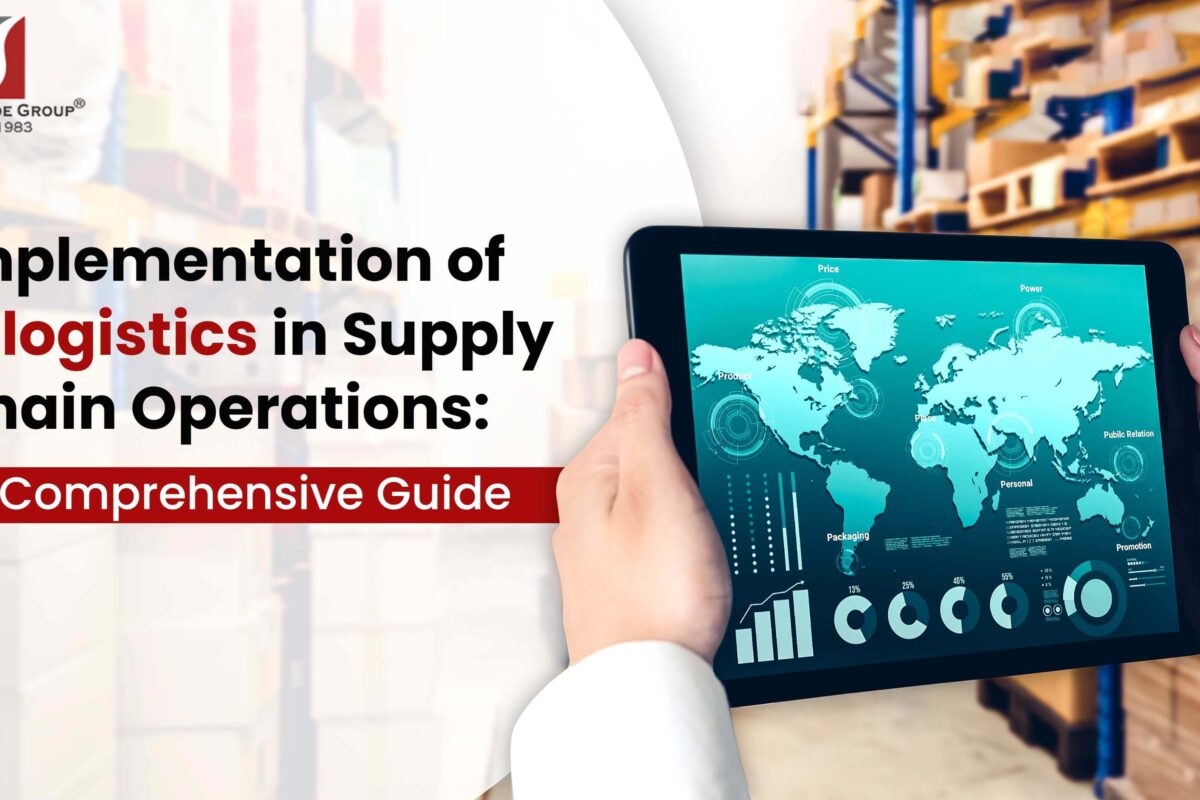Implementation of E-logistics in Supply Chain Operations: A Comprehensive Guide
Embark on a journey through the intricacies of E-logistics, a transformative realm where technology converges with supply chain prowess at Supreme Facility Management. In our holistic approach, we seamlessly intertwine excellence and innovation to redefine the dynamics of modern business operations.
This guide provides details about electronic logistics and supply chain management. It aims to shed light on how electronic logistics works within the complexities of supply chain management.
What is E-logistics?
E-logistics is a symphony of technology and digital systems orchestrating supply chain operations with finesse. Witness the convergence of information, communication, and automation technologies, harmonizing seamlessly for the efficient movement of goods and services.
Key Technologies Powering E-logistics
Dive into the technological marvels that power our E-logistics ecosystem. From Electronic Data Interchange (EDI) to Artificial Intelligence (AI), experience a fusion of cutting-edge technologies propelling supply chain efficiency to new heights.
- Electronic Data Interchange (EDI)
- Transportation Management System (TMS)
- Internet of Things (IoT)
- Warehouse Management System (WMS)
- Artificial Intelligence (AI) and Machine Learning (ML)
- Robotics and Automation
Benefits of E-logistics in Enhancing Supply Chain Operations
Explore the myriad advantages E-logistics offers, elevating supply chain operations to unparalleled levels of efficiency. At Supreme Facility Management, we delve into the enhanced visibility, streamlined communication, and operational efficiency that define the transformative impact of E-logistics.
- Improved visibility and real-time tracking of shipments
- Enhanced inventory management and reduced stock outs
- Increased operational efficiency and cost savings
- Streamlined communication and collaboration among stakeholders
- Faster order processing and delivery times
- Enhanced customer satisfaction and experience
Current Challenges in Supply Chain Operations and Their E-logistics Solutions
Navigate the challenges of traditional supply chain models to witness how E-logistics solutions unravel each obstacle. From lack of visibility to manual processes, discover how E-logistics emerges as the strategic antidote.
Current Challenges in Supply Chain Operations:
- Lack of visibility and transparency
- Inefficient inventory management
- Manual and paper-based processes
- Inaccurate demand forecasting
- Limited scalability and flexibility
Role of E-logistics in Addressing and Overcoming These Challenges:
- Improved visibility and real-time tracking
- Automated inventory management
- Digitized and streamlined processes
- Advanced analytics for demand forecasting
- Scalable and adaptable systems
Key Components of E-logistics Implementation in Supply Chain Operations
Step into the intricate web of E-logistics components, meticulously designed to synchronize seamlessly in the supply chain symphony. Implementing E-logistics in supply chain operations involves several key components, including:
- Electronic Data Interchange (EDI)
- Transportation Management System (TMS)
- Warehouse Management System (WMS)
- Inventory Management System
- Order Management System
- Tracking and Tracing Systems
What Are Some of the Challenges of E-Logistics Implementation?
Embark on a transformative journey where challenges become stepping stones to innovation. Navigate through integration complexities, data security concerns, and employee resistance, transforming challenges into opportunities in E-logistics.
- Integration with existing systems and processes
- Data security and privacy concerns
- Resistance to change from employees
- Initial investment and implementation costs
- Ensuring compatibility with partners and suppliers
Future Trends in E-Logistics
Peer into the future of E-Logistics where trends shape the industry’s trajectory.
From block-chain technology – artificial intelligence, discover the forward-looking innovations that define E-logistics.
- Block-chain technology for enhanced security and transparency
- Artificial Intelligence (AI) and Machine Learning (ML) for predictive analytics
- Autonomous vehicles and drones for last-mile delivery
- Augmented Reality (AR) and Virtual Reality (VR) for improved training and visualization
- Sustainability and green logistics practices
Conclusion
Implementing E-logistics in supply chain operations is crucial for organizations to stay competitive in today’s digital age. It offers numerous benefits, including improved efficiency, visibility, and customer satisfaction. By embracing key technologies and addressing implementation challenges, organizations can transform their supply chain operations and achieve sustainable growth.
Transform Supply Chain Operations with E-logistics: Choose Supreme Facility Management Now!
Embrace the power of E-logistics to revolutionize your supply chain operations. Choose Supreme Facility Management as your trusted partner, where cutting-edge technologies and optimized logistics processes converge. Contact us today and embark on a journey towards a more efficient and competitive supply chain.



